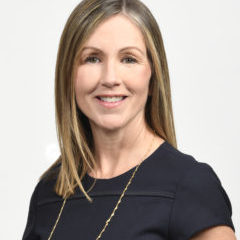A principal negative factor affecting the reinsurance industry is the large amount of claims uncertainty, but positive tailwinds are offsetting these negative headwinds, creating a stable outlook for the sector into 2022, according to Carlos Wong-Fupuy, senior director, AM Best.
Wong-Fupuy pointed first to COVID-19, where a high proportion of incurred-but-not-reported (IBNR) claims will take several years to develop. Other claims uncertainties are related to extreme weather events, such as the Texas freeze (in the first quarter of this year) and, more recently, the European floods, as well as the higher incidence of secondary perils, which are less well understood and more difficult to price and to model, he explained.

And, last but not least, another cause of claims uncertainty is the persistent trend of social inflation, which is affecting U.S. casualty lines, he continued.
Wong-Fupuy spoke during a recent AM Best panel discussion on the global reinsurance market, along with Juan Andrade, CEO, Everest Re Group; Kathleen Reardon, CEO, Hiscox Re & ILS, and Stefan Holzberger, AM Best’s chief rating officer, who was the moderator.
However, Wong-Fupuy said, the good news is that this environment of higher uncertainty has driven better underwriting discipline and improved pricing trends.
“We have seen several companies actually improving, across the board, their performance on an underlying basis,” once the impact of COVID-19 is excluded, he said.
Holzberger asked Andrade at Everest Re if he felt optimistic about the pricing environment and earnings expectations for reinsurers over the near term?
“I am optimistic about what I see today in the marketplace, and I see that continuing into 2022,” said Andrade, noting that the industry is very well capitalized, assisted by the formation of new companies.

Despite the influx of this new capital, most reinsurers “are reacting in a very disciplined way to the environment that they see,” Andrade affirmed. “I think most companies recognize that generating an underwriting profit in this environment is critical….”
Not only is the industry contending with perennially low interest rates, but climate change is also increasing the loss cost profile for the industry, which is all occurring during a pandemic, he said.
“I think there’s going to continue to be a bit of a tailwind behind us, on terms and conditions and on pricing that I do believe will continue into next year. So, I am convinced that there’s stability in the industry right now,” he said. “I see rational competition in this place, and I see much more focus on … underwriting profitability than I’ve seen in a number of years.”
Reardon said Hiscox Group is seeing a very favorable rating environment for its three business units: Retail, London Market, and Hiscox Re & ILS, specifically for big ticket business.
London Market and Re & ILS saw double digit rate increases for the first half of the year, she said.
“And if I zoom in on reinsurance specifically, the rate improvement has been slower, but still very healthy,” Reardon added. “We’re in our fourth year of rate increases and just shy of 40% rate improvement overall.”
During the first half of 2021, the company saw double digit increases on many property lines and even marine, she continued.

Turning to the geographical differences seen during H1, Reardon said, Japan still had mid to high single digit increases, while Florida, saw increases of 10%. “We’re in a much improved position going into the second half of the year and the upcoming 1/1 renewal season.”
Holzberger then asked Reardon where Hiscox Re would be looking grow and where it is reducing its exposure.
Addressing perceived growth opportunities, Reardon said, Hiscox Re, during the 1/1 renewals, will be taking a closer look at Europe where the company is underweight but maintains good relationships with cedents.
Reducing Cyber Exposure
On the other hand, Hiscox, at the group level, recently decided to “meaningfully cut back” its cyber exposure in certain industries and certain geographies, she said.
“On the reinsurance side, we managed to restructure our position somewhat, and non-renew the low attaching layers, partially to remove us away from the increased frequency of ransomware, but also to alleviate some of the premium increases for our clients.”
Hiscox’s strategy to cut its cyber exposure is just one example of the underwriting discipline that each company must employ in the current market environment – depending on individual loss trends and underwriting appetite. That was a prevalent theme of the panel discussion.
Bullish on Casualty
For example, despite the continuing pressures from social inflation, Everest Re has been more bullish on the casualty segment than some of its competitors.
“I think it all depends on where your company started from and the type of portfolio that you’ve had and what you’ve been exposed to in the past,” said Andrade.
“In our recent second quarter announcement…, we were able to grow successfully our casualty pro-rata and our casualty [excess of loss] business. We see casualty as an important diversifier to our property cat book of business,” he continued.
“One of the things that I’m driving within our company is the ability to be more broadly diversified and more sustainably profitable over time,” he said. “We see the current casualty opportunities as a way to do that. Now, that also means that you have to be very respectful when you write casualty because of the long tail nature of these lines.”
The current pricing environment is supporting the underlying growth in casualty, “but you do have to make sure that your loss trend is not exceeding your rate. Now we happen to be in an environment right now where rate is at or exceeding loss trend in some of these lines, so it becomes attractive.”
While Everest sees a good opportunity to grow casualty at this point in the cycle, if that situation changes, so will its underwriting appetite. “You have to be very careful in these lines of business,” Andrade emphasized.
Wong-Fupuy agreed that some companies see improved pricing as an attractive business opportunity, but those tend to be companies that haven’t been “that exposed to losses from social inflation.”
Other companies view the casualty price increases as insufficient and are exiting certain lines of business, Wong-Fupuy said.
*This story ran previously in our sister publication Insurance Journal.





















 Five AI Trends Reshaping Insurance in 2026
Five AI Trends Reshaping Insurance in 2026  Insurance Costs, Climate Concerns Factor Heavily in U.S. Home Buying Decisions
Insurance Costs, Climate Concerns Factor Heavily in U.S. Home Buying Decisions  Artificial Intelligence Is Rewriting the Rules for Commercial Lines
Artificial Intelligence Is Rewriting the Rules for Commercial Lines  First Atlantic Hurricane Forecast for 2026 Suggests Season Close to 30-Year Norm
First Atlantic Hurricane Forecast for 2026 Suggests Season Close to 30-Year Norm 










